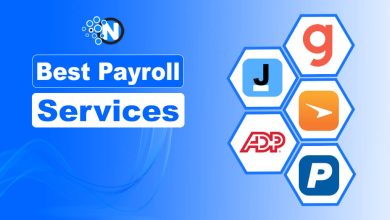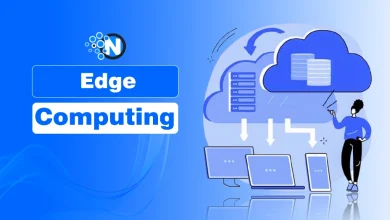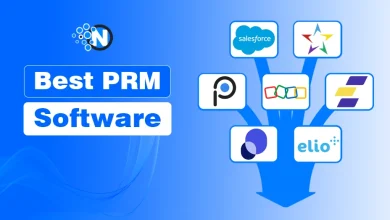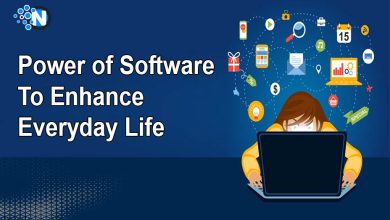Key Features of Clinical Trial Management Software
Clinical trials cover a broad field of life sciences that aim to understand how the human body works, how illnesses develop, and how individuals react to certain drugs or treatments. Understandably, every study consists of several stages and various moving parts to come up with definitive conclusions, so it can be long-winded and expensive. In fact, according to research, drug discovery and development take an average cost of USD$ 2.8 billion and could drag to 15 years.
Every process must be thoughtfully designed, implemented, and reviewed—there’s just no room for errors. With several things to consider, clinical trial management software (CTMS) is indispensable for every research team.
But how does it streamline the clinical trial process? Let’s answer this question by dissecting its key features.
Centralized Clinical Data Management
High-quality data is key to every successful clinical research. But have you ever imagined how study teams are able to juggle hundreds of spreadsheets—each containing crucial information about the different aspects of clinical trial operations? This is where centralized data management comes in.
Data collection and storage
CTMS acts as a comprehensive hub for all research-related data. These tools can store the project plan, study startup, trial protocols, individual patient information, and financial records.
CTMS relies on a software system with electronic data capture to collect information with unmatched ease and precision. Electronic case report forms (eCRFs) or digital questionnaires of each study participant can also be conveniently collected and stored in this centralized hub. As such, it eliminates the need for multiple data entry points and minimizes the risks of data entry errors and inconsistencies.
Data organization
But clinical data management isn’t just about storage. You also need to organize and categorize data to make it more valuable to the team.
CTMS allows you to create custom fields, set up hierarchies, and establish relationships between different data points. These features make it easy to retrieve any information when you need it—saving you countless hours of searching through disparate systems.
Real-time information and reporting
Centralized data management allows easy access to clinical trial data. You can have an overview of your research operations and study progress or get the information you want with just a few clicks.
In essence, streamlined data management is the backbone of every clinical trial management system. This key CTMS feature lays the foundation for enhancing clinical trials with management software and for other functionalities to work their magic—allowing you to sail through your research smoothly.
Patient Recruitment and Management
Finding the right patients for your clinical trial can sometimes feel like searching for a needle in a haystack. According to 2020 research, 55% of global trials didn’t push through because of low participant rates. Around 80% needed extensions or additional study sites because of poor enrolment efficiency.
CTMS is designed to streamline patient recruitment and management, and this includes initial outreach to ongoing participant engagement. These functionalities can help simplify essential processes, including:
Participant selection
This software lets you quickly identify potential candidates based on your study’s requirements. It also allows you to create detailed patient profiles, including their contact information, demographic data, medical history, and trial-specific criteria.
Participant status
Track the status of potential participants throughout the recruitment process. You’ll know the candidates contacted, who’s shown interest, and who are ready for screening.
Subject management
Manage individual journeys throughout the study. With this, you can schedule appointments, send reminders, and monitor adherence to trial protocols. You can also set alerts if a participant fails to comply with a required task.
Patient feedback
The system enables real-time feedback on patient-reported outcomes, which is crucial for identifying potential issues or assessing the effectiveness of your treatment.
This CTMS feature generates a comprehensive record of each participant’s involvement—making every clinical trial more engaging to participants and more manageable for study teams. This not only helps data collection and analysis but also ensures compliance with regulatory requirements.
Regulatory compliance
Clinical trials are highly regulated, and every biomedical, pharmaceutical, or contract research organization (CRO) knows this. It takes up to 10 months for the United States Food and Drug Administration (FDA) to review standard medications and treatments. However, those meant to prevent or address serious conditions may earn a ‘priority review’ status and can be approved or denied within six months.
CTMS has features that help these teams navigate the complex rules that apply to specific research settings. These include
Electronic Trial Master File (eTMF)
Some clinical trial management systems are pre-loaded with common regulatory document forms and templates. Others have an integrated eTMF, which gathers, stores, manages, and shares all clinical trial documents. These include approvals, protocols, and safety reports.
Keeping regulatory documents in order
CTMS also helps researchers manage the lifecycle of regulatory documents. The software allows tracking submission deadlines, monitoring approval status, and setting notifications for upcoming renewals.
Maintaining an audit trail
Regulatory compliance calls for strict transparency through document version control, and CTMS allows you to do this. Beyond reflecting the most updated version, the system also shows all document changes, including who made the changes and when.
Integrating digital signing
Modern research involves multiple stakeholders in various locations. That’s why electronic signature tools are necessary for facilitating secure and compliant signing of important documents.
CTMS streamlines your filing system and facilitates transparency. It organizes your regulatory documents in one place, allowing you and the evaluators to quickly find the information needed for an audit. With these capabilities, a potentially time-consuming and complicated bureaucratic procedure becomes a breeze.
Moreover, some CTMS offer mock audits to test your readiness and spot potential compliance gaps. This can be useful for academic medical centers and cancer centers covered by the Clinical Research Billing Compliance—guaranteeing that treatments administered to participants are billed accurately.
Financial management and budgeting
Clinical studies are costly because of the resources, including manpower, needed to make them work. Thus, research teams are expected to adhere to sound financial management practices for continuity.
Here’s how CTMS helps you keep your clinical operations within budget:
Cost planning
Software solutions allow you to create detailed budgets for your research operations, breaking down costs by site, activity, and period. Besides running tests, study team members must monitor each research site, ensuring quality for every process. This activity takes up to 30% of the total trial costs in pharmaceutical studies.
Automatic payments
Ensuring accurate and timely allocations to your study sites is key to maintaining smooth clinical trial operations. Manage on-site payments easily with this feature.
Expense tracking
To know if your finances are on track, CTMS lets you monitor actual expenses and compare them against your budget in real-time. Thus, it becomes easier to identify any cost overruns or unexpected expenses and correct them before turning into costly issues.
Financial reporting
Many CTMS platforms integrate with accounting systems, which not only reduces the administrative burden but also reduces the risks of errors in financial reporting. You can also compare costs across different research locations for a data-driven budgeting approach.
Beyond helping research teams manage their resources well, these features also provide the transparency and accountability that sponsors and stakeholders require.
Reporting and Analytics
With analytics capabilities embedded in each feature, CTMS can turn data into actionable insights. You can create custom reports on multiple aspects of your research operations, including patient enrollment rates, site performance, budget vs. actual spending, and protocol deviations.
For instance, you can use predictive analytics to anticipate potential bottlenecks in your clinical trials. Doing so lets you form proactive strategies to minimize their impacts.
And besides facilitating sound decision-making, CTMS platforms also have visualization capabilities that let you share reports in a more digestible manner.

Wrapping it up
CTMS is a comprehensive toolkit that covers the most crucial aspects of research: data management, regulatory compliance, financial governance, and last but not least, reporting and analytics. By bringing these elements together, this software creates a seamless and efficient process for overseeing every research operation.
CTMS is a worthwhile investment, so choose one that can easily adapt with you as your needs grow. More importantly, keep these key features in mind whether switching to a new system or upgrading your current tools.




